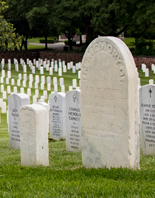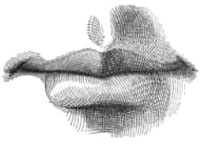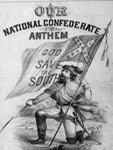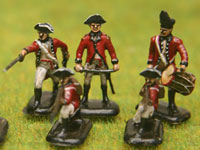West Point graduate and career United States Army officer Barnard Bee commanded one of the Confederate brigades at the July 1861 battle at Manassas. A South Carolinian by birth, Bee—like many Southern officers of the period—was torn between his oaths to defend the Constitution and his loyalty to his home state when Southern states seceded to form the Confederacy in 1860 and 1861. In March 1861, Bee resigned his commission in the U.S. Army and returned to South Carolina. He was named Brigadier General in the Confederate Army in June.
Bee commanded one of four brigades in the Army of the Shenandoah at the July 1861 battle at Manassas, Virginia. He is perhaps best remembered for giving Confederate General Thomas Jackson his enduring nickname; in the thick of battle, Bee referred to Jackson standing fast like a “stone wall.” (Precisely what Bee meant by the remark has never been clear. Many believe it was meant as a tribute to Jackson’s stubborn defense as Bee attempted to inspire his own brigade: “There stands Jackson like a stone wall! Rally behind the Virginians!” At least one observer, however, interpreted it as a frustrated response to Jackson’s refusal to move forward and aid Bee’s own attack: “There is Jackson standing like a damned stone wall.”) A bullet struck and killed Bee shortly after his remark; he was never able to clarify its meaning. The first battle at Manassas would be the only major engagement for the Confederate Army of the Shenandoah; its constituent units were reorganized into new commands soon afterwards.
He is perhaps best remembered for giving Confederate General Thomas Jackson his enduring nickname; in the thick of battle, Bee referred to Jackson standing fast like a “stone wall.”
It is impossible to determine exactly what would have become of Bee or his military career had he not been killed. Such questions belongs to a category historians refer to as counterfactual, since they deal with a possible world for which, by definition, no factual or documentary evidence exists. (Though counterfactuals cannot, by their nature, have answers that are precise or correct, historians often employ such “what if?” questions to test ideas about cause and effect regarding events in the existing historical record.)
In Bee’s case, there are a number of plausible commands he might have assumed. An officer with both professional training and military experience in an army short of both assets (particularly at the outset of the war), it is not unlikely that he would have continued to rise through the ranks had he lived. The fortunes of the other brigade commanders in the Army of the Shenandoah are instructive in this case. (Two of that Army’s four brigade commanders survived its first and only large engagement: Bee and Colonel Francis Bartow both died at First Manassas.)
Both of the surviving brigade commanders eventually rose to high command within the Confederate Army. Thomas Jackson, rechristened “Stonewall” after Manassas, ultimately commanded his own corps and became Robert E. Lee’s most trusted lieutenant before being mortally wounded at the 1863 battle at Chancellorsville. Kirby Smith was promoted to Major General and then to Lieutenant General; he commanded a division in the Army of Northern Virginia before assuming command of the Army of East Tennessee in February 1862. From 1863 until the end of the war, he commanded the Confederacy’s Trans-Mississippi Department as a Lieutenant General.
Counterfactual questions depend a great deal on contingency
Given Bee’s background and the paths of his counterparts in the Army of the Shenandoah, it is plausible to imagine him rising to command his own corps in the east like Jackson, or being transferred west to assume a command there, like Smith. The four regiments that comprised Bee’s Third Brigade at Manassas continued to fight together during the 1862 Seven Days campaign as part of Joseph Johnston’s Army of Northern Virginia; it is similarly reasonable to imagine that Bee would have remained in command of that unit until being promoted to command his own division in the Army of Northern Virginia.
By their nature, counterfactual questions depend a great deal on contingency: much of what might have happened to Bee had he survived turns on a cascade of events that are impossible to know (does the Union turn back the first Confederate invasion at Antietam in this alternate past? Does Stonewall Jackson survive the battle at Chancellorsville? Could Bee himself have been killed during the Seven Days, before rising to higher command?) Given those constraints, it is impossible to pinpoint exactly how Bee’s career would have played out had he survived First Manassas; nevertheless, the exercise is instructive in demonstrating how small the pool of experienced officers was early in the Civil War and how dependent many of the battles were on exactly this kind of chance and contingency.



